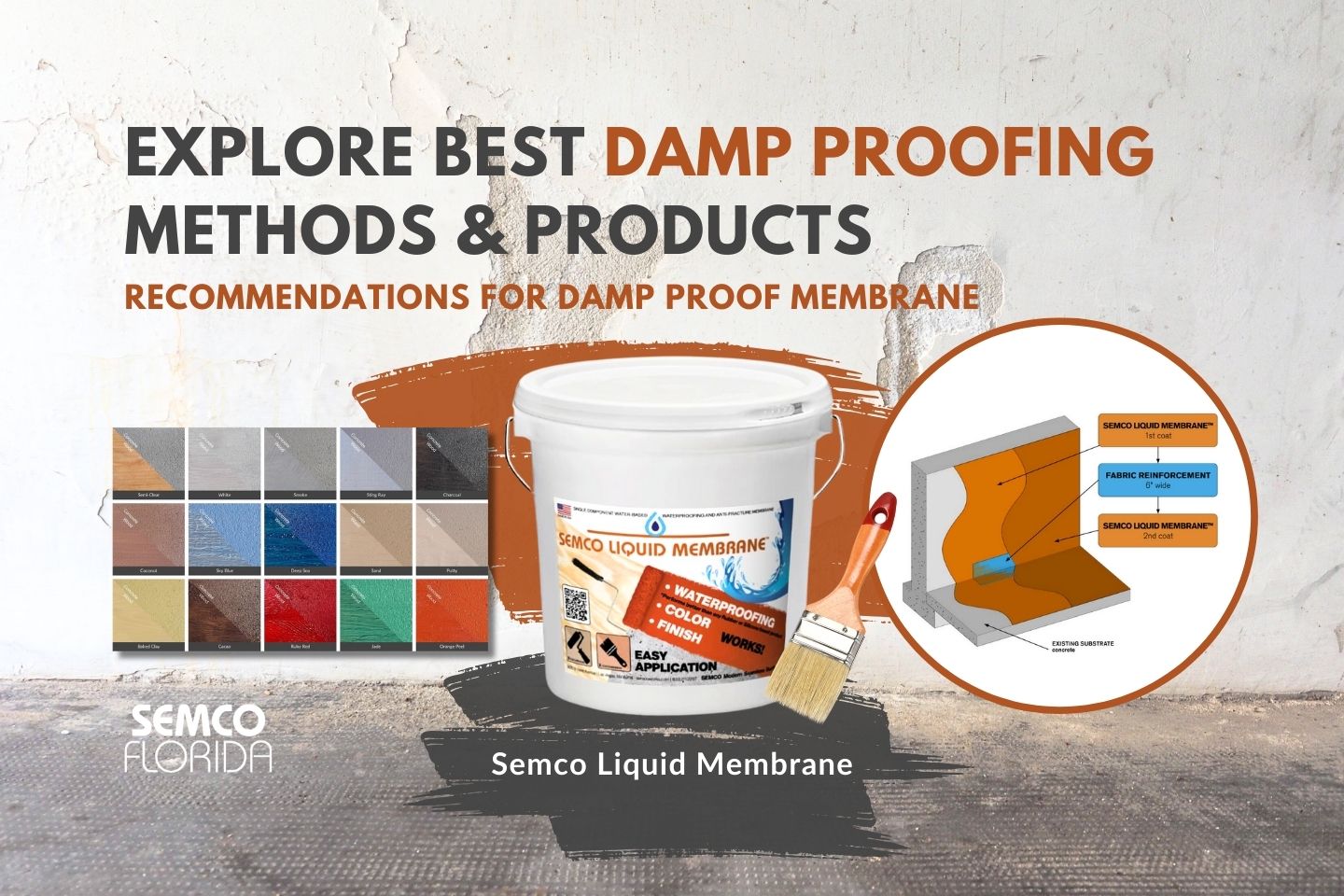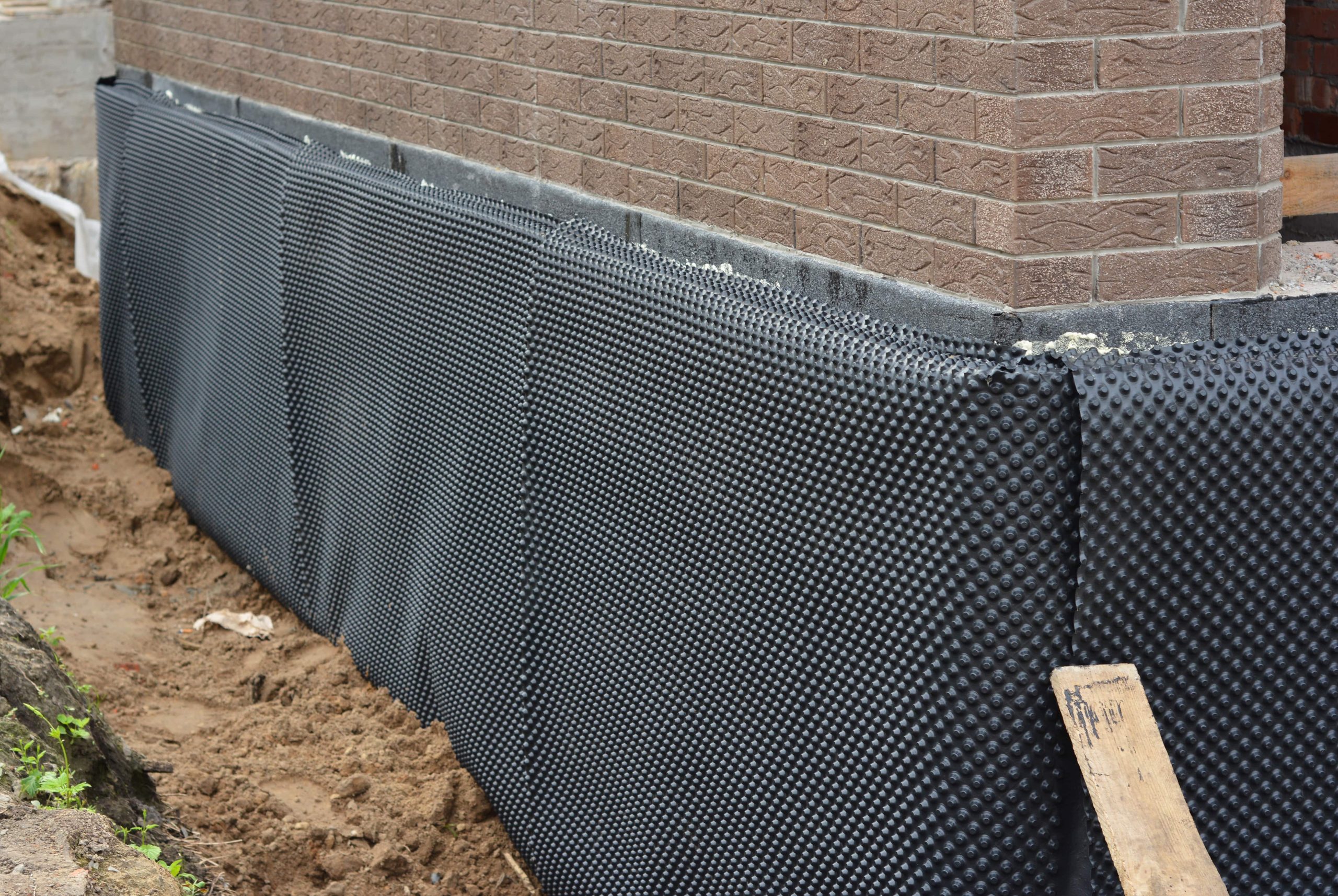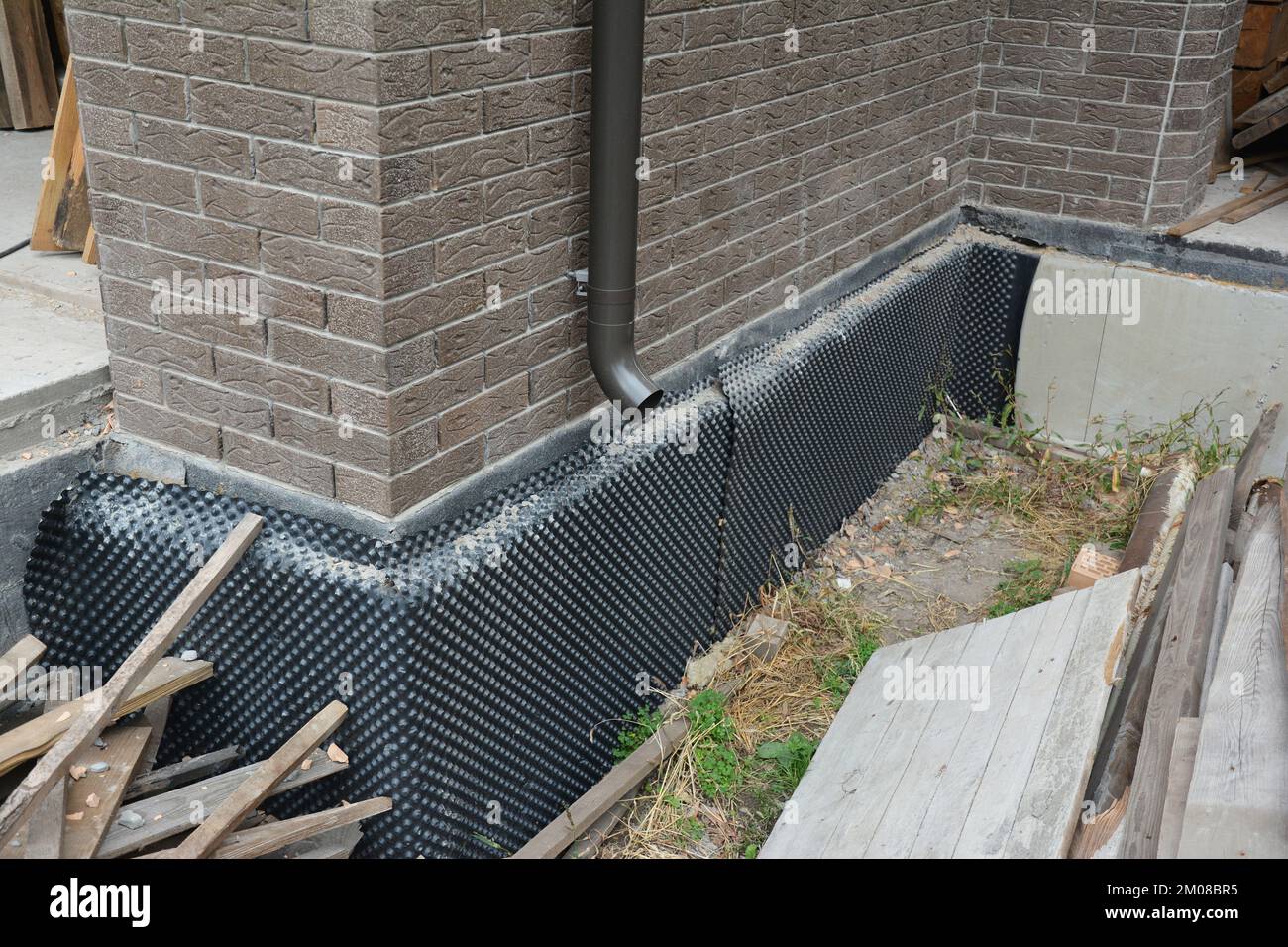Discovering the Different Methods and Solutions for Effective Damp Proofing
Moisture in structures poses substantial challenges to both structural honesty and interior air high quality. Numerous strategies and options have arised to combat this prevalent problem. From standard damp-proof membrane layers to cutting-edge chemical treatments, each approach uses distinct advantages. Comprehending these choices is important for reliable moisture control. Nonetheless, picking the best solution depends upon details structure problems and demands, motivating more exploration right into one of the most reliable wet proofing strategies readily available.
Recognizing the Root Causes Of Wetness
Although wetness can emerge from different sources, understanding these causes is vital for efficient removal. Frequently, dampness stems from 3 key sources: rising wet, permeating damp, and condensation. Climbing moist occurs when groundwater takes a trip up-wards through permeable materials, such as block or stone, commonly because of a lack of a reliable obstacle (damp specialist newcastle). Penetrating wet is usually brought on by exterior factors, consisting of roofing system leakages, damaged rain gutters, or damaged walls, enabling water to infiltrate a residential property. Condensation, on the various other hand, results from excess dampness in the air, often worsened by bad air flow and temperature differences, leading to water droplets basing on surfaces. Recognizing these underlying concerns is necessary, as each type of wetness requires a customized technique for removal. Appropriate assessment aids in identifying the most efficient services, eventually protecting the structural honesty of a building and boosting indoor air quality
Traditional Damp-Proof Membranes

Chemical Damp-Proofing Solutions
Chemical damp-proofing remedies offer an ingenious strategy to preventing moisture intrusion in buildings. These approaches commonly involve the application of liquid chemicals that pass through stonework and form an obstacle versus rising moist. Frequently made use of chemicals consist of silanes, siloxanes, and other water-repellent representatives that react with surface products to create a hydrophobic layer.The application procedure usually calls for drilling openings right into the walls, injecting the chemical solution, and enabling it to heal. This approach is especially advantageous for older structures where typical damp-proof membranes might be not practical. Chemical damp-proofing can be much less turbulent and a lot more cost-effective than extensive restoration projects.While reliable, these remedies depend on appropriate application and environmental problems for peak performance. damp specialist newcastle. Normal upkeep and tracking are essential to guarantee the longevity of the damp-proofing therapy. Overall, chemical damp-proofing stands for a functional choice for securing buildings versus moisture-related damages
Cavity Wall Surface Building Methods
Cavity wall surface construction methods provide numerous benefits, specifically in wetness control and energy performance. By integrating an air gap between two layers of stonework, these walls effectively minimize water ingress while enhancing insulation. This mix not just secures structures from wetness but additionally adds to decreased power usage.
Advantages of Dental Caries Walls
When taking into consideration efficient wet proofing techniques, the benefits of cavity wall surfaces stick out prominently. Tooth cavity wall surfaces consist of 2 different layers, producing an air void that efficiently minimizes dampness penetration. This design minimizes the danger of dampness, as the external wall serves as a barrier against rainfall and water ingress. Additionally, dental caries wall surfaces enhance thermal insulation, which contributes to power performance by reducing warm loss. They likewise offer audio insulation, aiding to create a quieter interior atmosphere. The air void enables for air flow, which assists in moisture control and decreases the possibility of mold and mildew development. These advantages not just improve the overall comfort of a building yet also contribute to its longevity and structural integrity.
Moisture Control Techniques
Efficient wetness control strategies are crucial in dental caries wall construction to ensure long-term defense against dampness. One key technique entails the consolidation of weep openings, which assist in water drain from the dental caries, avoiding buildup. Furthermore, using breathable membrane layers can help take care of dampness levels while permitting trapped vapor to get away. Proper positioning of insulation is additionally crucial, as it needs to not obstruct drain courses. Furthermore, making certain that the outer leaves of the dental caries wall surface are built with waterproof products enhances general resilience. Regular maintenance checks are important to identify any kind of blockages or damages early, guarding the structure's honesty. Ultimately, a combination of these techniques creates a robust defense against dampness invasion in dental caries wall surfaces.
Insulation and Energy Efficiency
Insulation plays an important function in improving power efficiency within tooth cavity wall surface building. By integrating protecting products, these walls develop a thermal barrier that lessens warm loss and minimizes energy consumption. Reliable insulation not just helps maintain a secure indoor temperature level however likewise minimizes the risk of moisture, as it stops condensation within the wall surface tooth cavity. Numerous methods, such as using inflexible foam boards or mineral wool, can be employed to accomplish excellent insulation efficiency. Furthermore, correct installation is necessary to ensure that spaces and gaps are lessened, which can or else compromise energy effectiveness. Eventually, a well-insulated cavity wall surface contributes substantially to general sustainability and reduces cooling and heating prices for home owners.
Exterior Damp Proofing Techniques
External moist proofing approaches are crucial for protecting structures from moisture seepage. Two effective methods include the application of water resistant membranes and the setup of French drains pipes. These remedies assist minimize water buildup and maintain the stability of buildings.
Waterproof Membrane Layer Application
While numerous methods exist for protecting against moisture ingress, the application of waterproof membrane layers stays a very reliable external moist proofing strategy. These membrane layers are typically made from materials such as polyethylene, rubber, or modified asphalt, offering a durable barrier versus water penetration. The installment process entails using the membrane layer to the external surfaces of foundations or wall surfaces, ensuring total protection to avoid leaks. Correct adhesion and sealing at joints are important to taking full advantage of effectiveness. Waterproof membrane layers can be used in numerous kinds, including liquid coatings and sheet membrane layers, enabling adaptability based upon the specific demands of the structure. This method not only shields buildings from dampness but likewise boosts their long life and architectural honesty.
French Drainpipe Setup
One efficient approach for handling groundwater and preventing wetness buildup around a structure's foundation is the installment of a French drain. This drainage system is composed of a trench full of crushed rock and a perforated pipeline that reroutes surface area water away from the structure. Appropriate installment calls for mindful planning, guaranteeing that the drainpipe slopes far from the framework to facilitate perfect water circulation. In addition, the area of the drain is important; it should be placed in locations vulnerable to pooling or excess moisture. Regular maintenance, including clearing debris from the crushed rock and ensuring the pipeline remains unhampered, is important for long-lasting effectiveness. Ultimately, a well-installed French drain can considerably decrease the threat of water-related issues in structures and cellars.
Inside Waterproofing Methods
Inside waterproofing methods are important for securing a building's inside from moisture seepage and prospective water damages. These strategies generally entail the application of specialized products and techniques made to develop a wetness barrier within the framework. One usual technique is the use of water resistant finishes or sealers on walls and floorings, which prevent wetness from passing through surfaces.Additionally, mounting interior drainage systems, such as sump pumps, can properly manage water buildup in cellars and creep rooms. One more method includes making use of vapor obstacles, which are mounted to inhibit wetness activity from the ground into living spaces.Moreover, dealing with any type of splits or spaces in walls or foundations with proper sealers assures an extensive protection against water invasion. By carrying out these interior waterproofing strategies, property proprietors can considerably reduce the threat of mold and more info mildew development, structural damage, and various other moisture-related issues. Appropriate implementation of these strategies is important for long-lasting defense and structure stability.
Routine Maintenance and Evaluation Practices
Normal upkeep and assessment methods are important for assuring the long-term performance of damp proofing remedies in any structure. Routine checks enable home owners to identify early signs of moisture invasion, such as peeling off paint, mold development, and mildewy odors. These indications can signify underlying concerns that require immediate attention.Inspections should be carried out a minimum of every year, concentrating on at risk locations like cellars, crawl spaces, and exterior wall surfaces. During these analyses, building proprietors need to check out sealants, drainage systems, and ventilation to validate they function correctly.Additionally, maintaining downspouts and rain gutters is important, as stopped up systems can lead to water buildup near the foundation. Carrying out a routine maintenance schedule, along with prompt fixings, can significantly prolong the life-span of wet proofing measures and secure the structural integrity of the structure. Proactive actions eventually contribute to the total wellness and safety of the living environment.
Often Asked Questions
How Much Time Does Damp Proofing Usually Last?
The duration of damp proofing performance differs, generally lasting in between 20 to 50 years. Aspects such as application high quality, ecological problems, and maintenance methods considerably affect the longevity of the damp proofing therapy.

Can I Damp Proof My Home Myself?
The individual pondered the expediency of DIY damp proofing. With proper research and the ideal materials, it is possible. Nevertheless, they likewise recognized the significance of specialist assistance to assure resilient performance and avoid future issues.
What Are the Indications of Inefficient Damp Proofing?
Signs of inadequate wet proofing consist of consistent stuffy smells, noticeable mold and mildew development, peeling paint, moist spots on wall surfaces, and wood degeneration - damp specialist newcastle. Property owners need to deal with these problems quickly to stop more damage and health concerns
Does Damp Proofing Affect Indoor Air Quality?

How Much Does Specialist Damp Proofing Price?
Expert damp proofing prices differ substantially, usually ranging from $1,000 to $5,000 relying on the property's size, the level of the moist issue, and selected techniques. Each circumstance calls for a customized evaluation for accurate pricing. Frequently, moisture stems from 3 main sources: climbing damp, penetrating damp, and condensation. When taking into consideration efficient damp proofing techniques, the benefits of dental caries walls stand out prominently. Outside damp proofing techniques are important for safeguarding frameworks from moisture infiltration. While numerous methods exist for avoiding wetness access, the application of waterproof membranes stays an extremely reliable outside wet proofing method. Signs of inadequate damp proofing include relentless mildewy smells, visible mold and mildew development, peeling off paint, damp patches on walls, and wood decay.